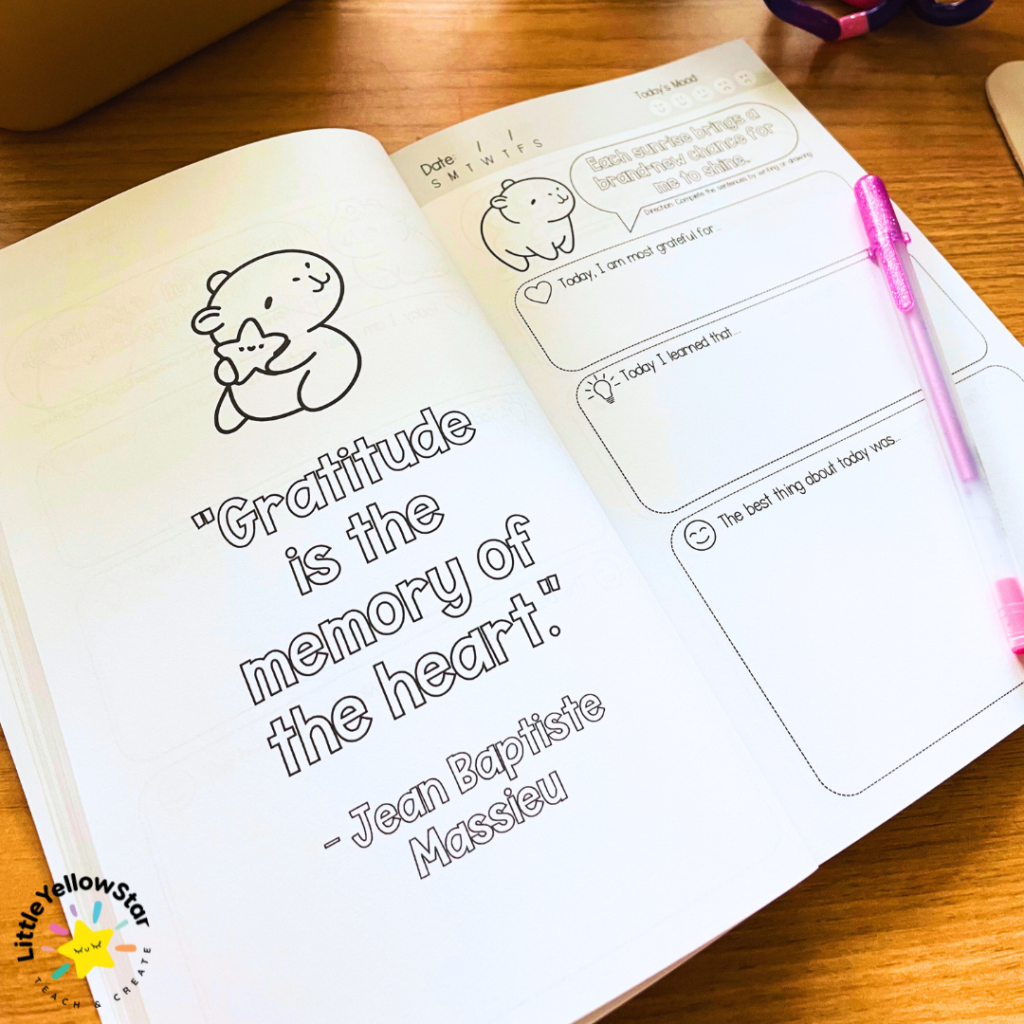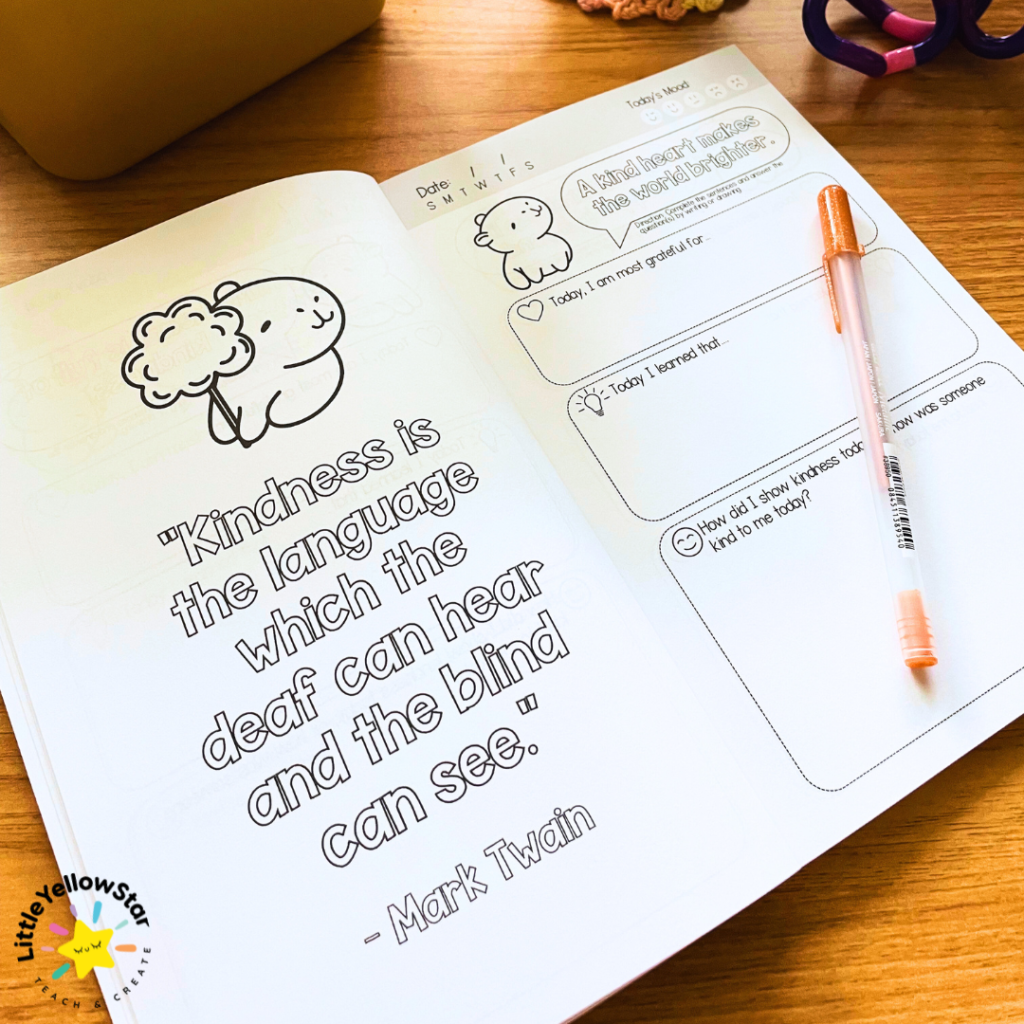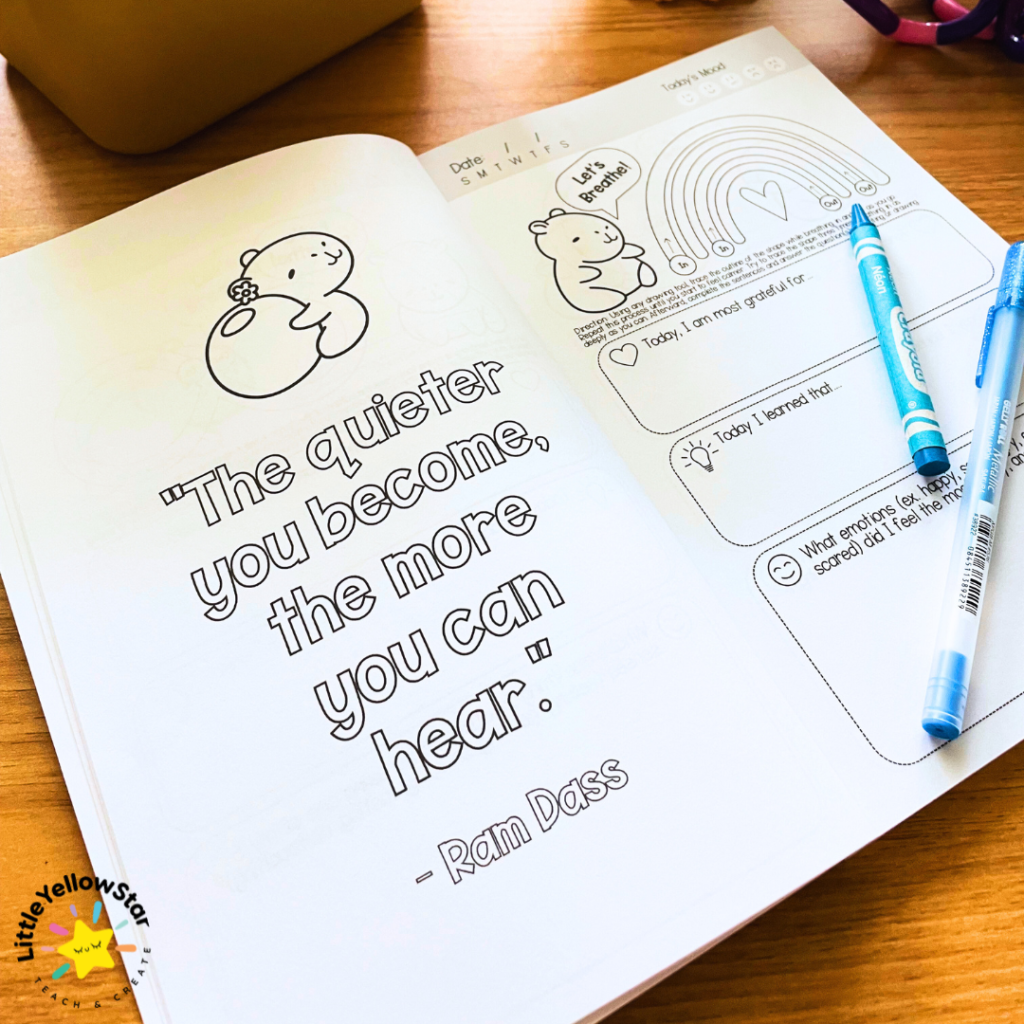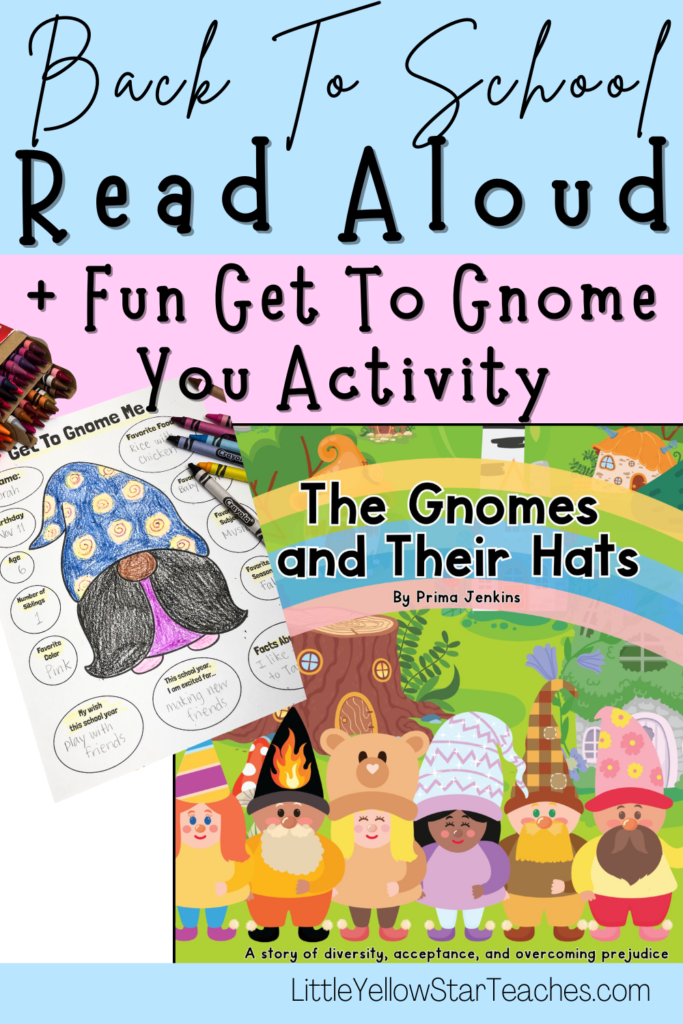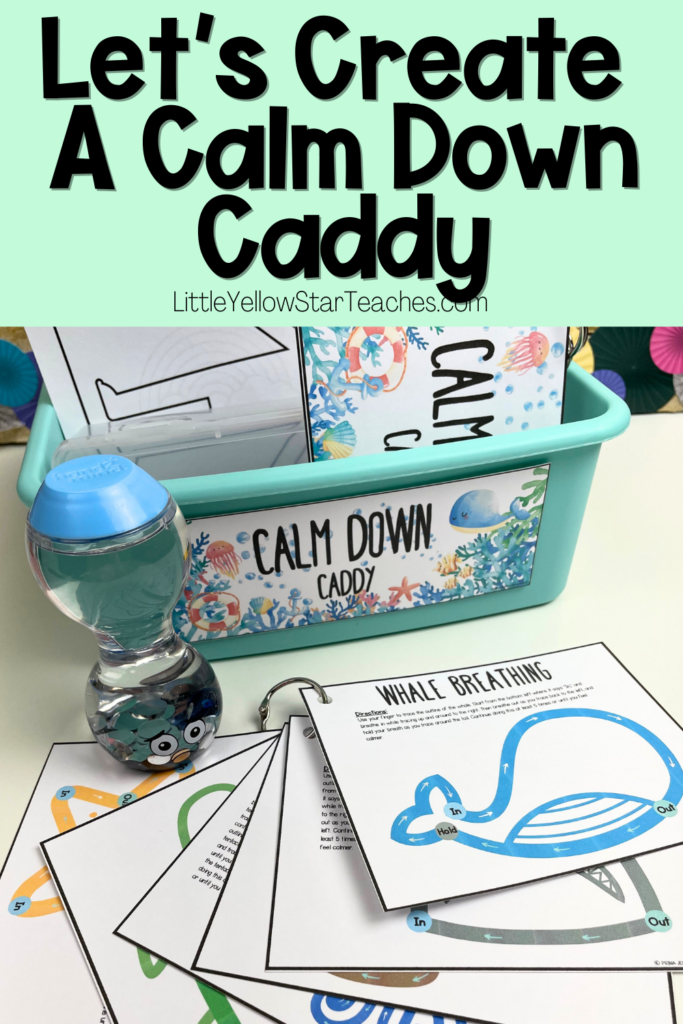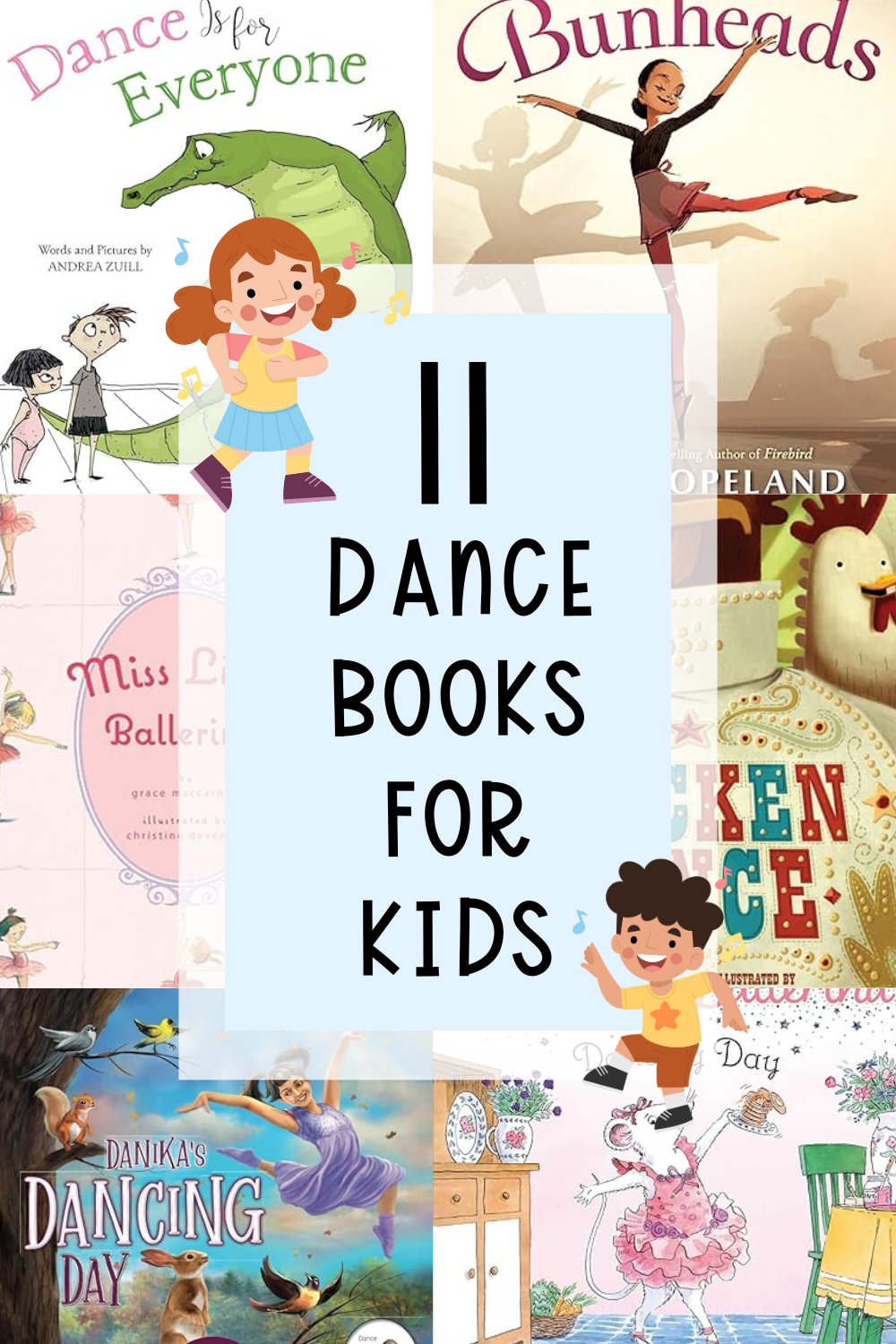Ready to blast off and explore a new world? These Venus facts for kids will take you to one of the brightest and hottest planets in our solar system! Learn what makes Venus special, discover new space words, try out hands-on activities, and enjoy fun stories about the “morning star.” Get ready for an out-of-this-world adventure as you learn about Venus!
***Disclosure: This post contains an Amazon affiliate link that at no additional cost to you, I may earn a small commission when you purchase through the link from my blog. Thank you for your support!
Table of Contents
Grab these free resources to make your teaching life easier!
What is Venus?
Venus is the second planet from the sun and is often called Earth’s “sister planet” because they are similar in size and shape. But Venus is a very different world! It’s the hottest planet in our solar system, with thick clouds of poisonous gas and temperatures that can melt metal. Venus is the brightest planet in the night sky and is sometimes called the “morning star” or “evening star.” A day on Venus is longer than a year—Venus spins so slowly that it takes more than 243 Earth days to turn once!
Teaching Resources
11 Venus Facts for Kids
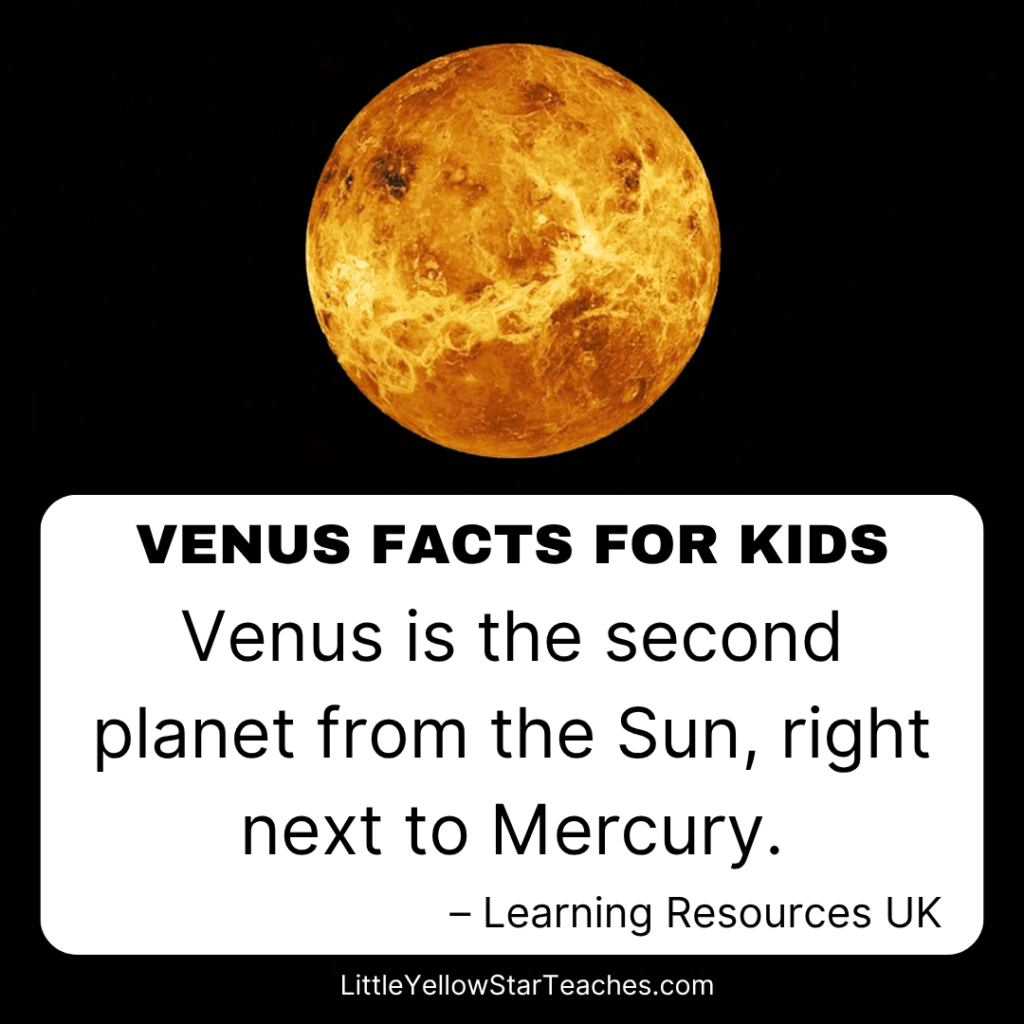
#1 Venus is the second planet from the Sun, right next to Mercury.
Venus is the second closest planet to the Sun, just after Mercury. It’s one of Earth’s nearest neighbors in space!
Source: Learning Resources UK
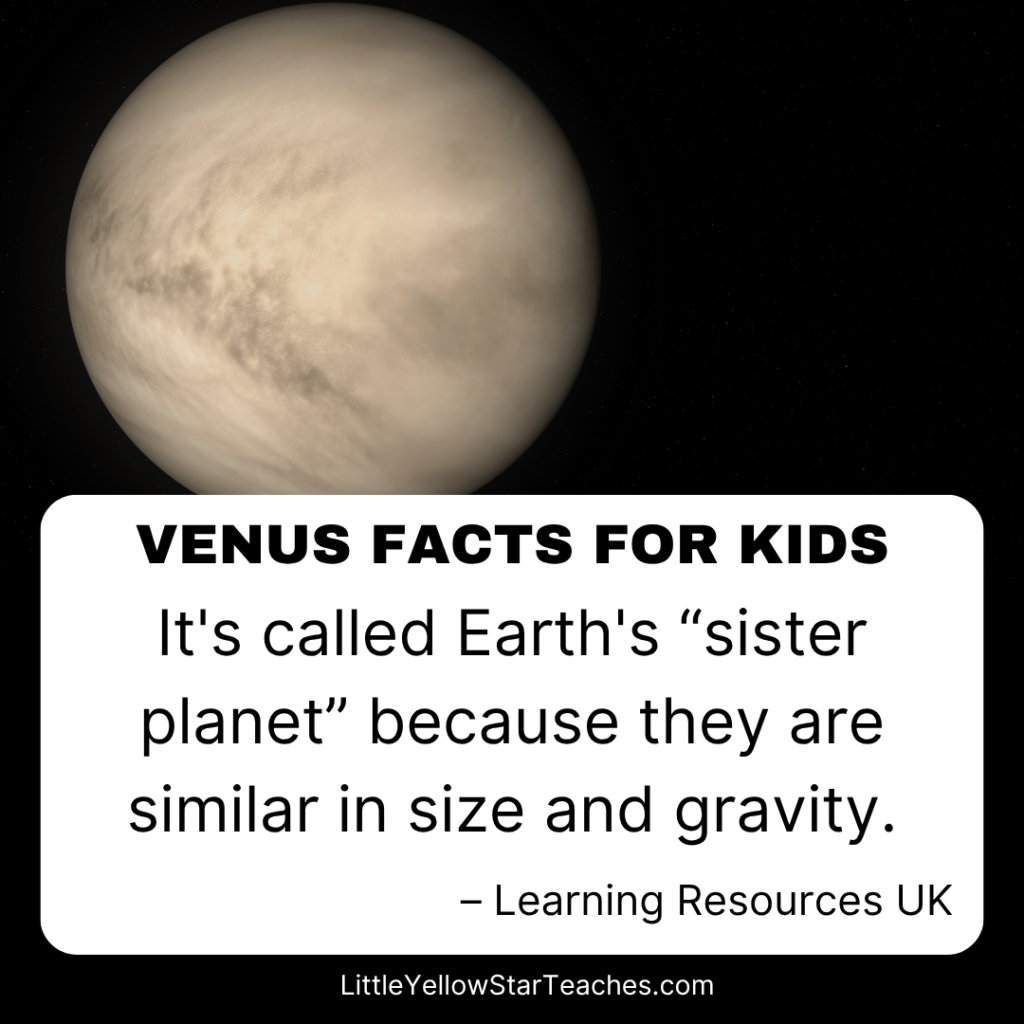
#2 It’s called Earth’s “sister planet” because they are similar in size and gravity.
Venus and Earth are often called “sister planets” because they are almost the same size and have similar gravity, but Venus is much hotter and has a different atmosphere.
Source: Learning Resources UK

#3 Venus is the hottest planet in our Solar System, with temperatures around 462 °C (hot enough to melt metal!).
Venus holds the record for being the hottest planet in our Solar System, with surface temperatures high enough to melt lead or metal—hotter even than Mercury, which is closer to the Sun!
Source: DK Find Out

#4 It has a thick atmosphere full of carbon dioxide and sulfuric acid clouds that trap heat.
Venus’s atmosphere is packed with carbon dioxide and covered in thick clouds of sulfuric acid. This acts like a giant greenhouse, trapping heat and making the surface extremely hot.
Source: Learning Resources UK
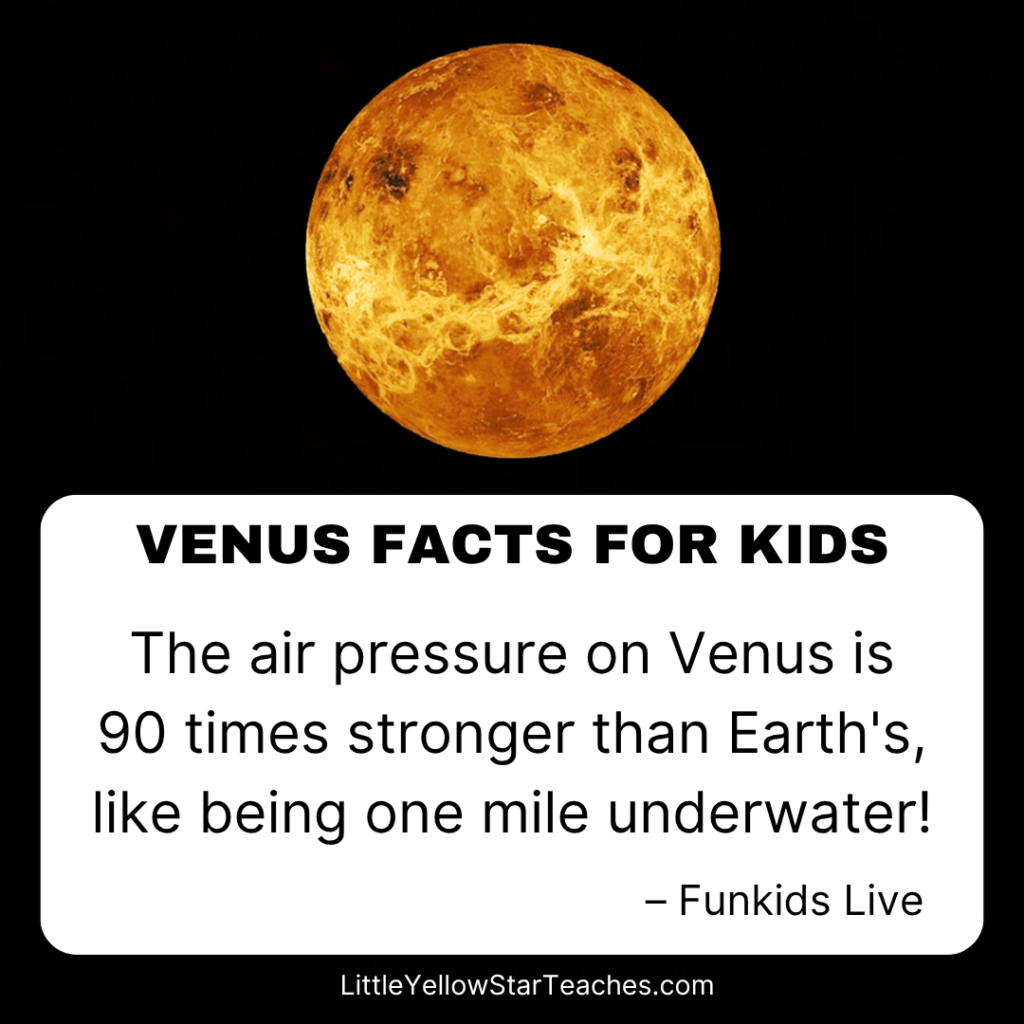
#5 The air pressure on Venus is 90 times stronger than Earth’s, like being one mile underwater!
If you could stand on Venus, the air would push on you with 90 times the pressure you feel on Earth—similar to being deep beneath the ocean.
Source: Funkids Live

#6 The Sun on Venus would rise in the west and set in the east, because it spins backwards.
Venus spins the opposite direction of most planets, so the Sun would rise in the west and set in the east if you were on its surface.
Source: Royal Museums Greenwich
Check Out Capybara-Theme Daily Reflection Journals For Kids!
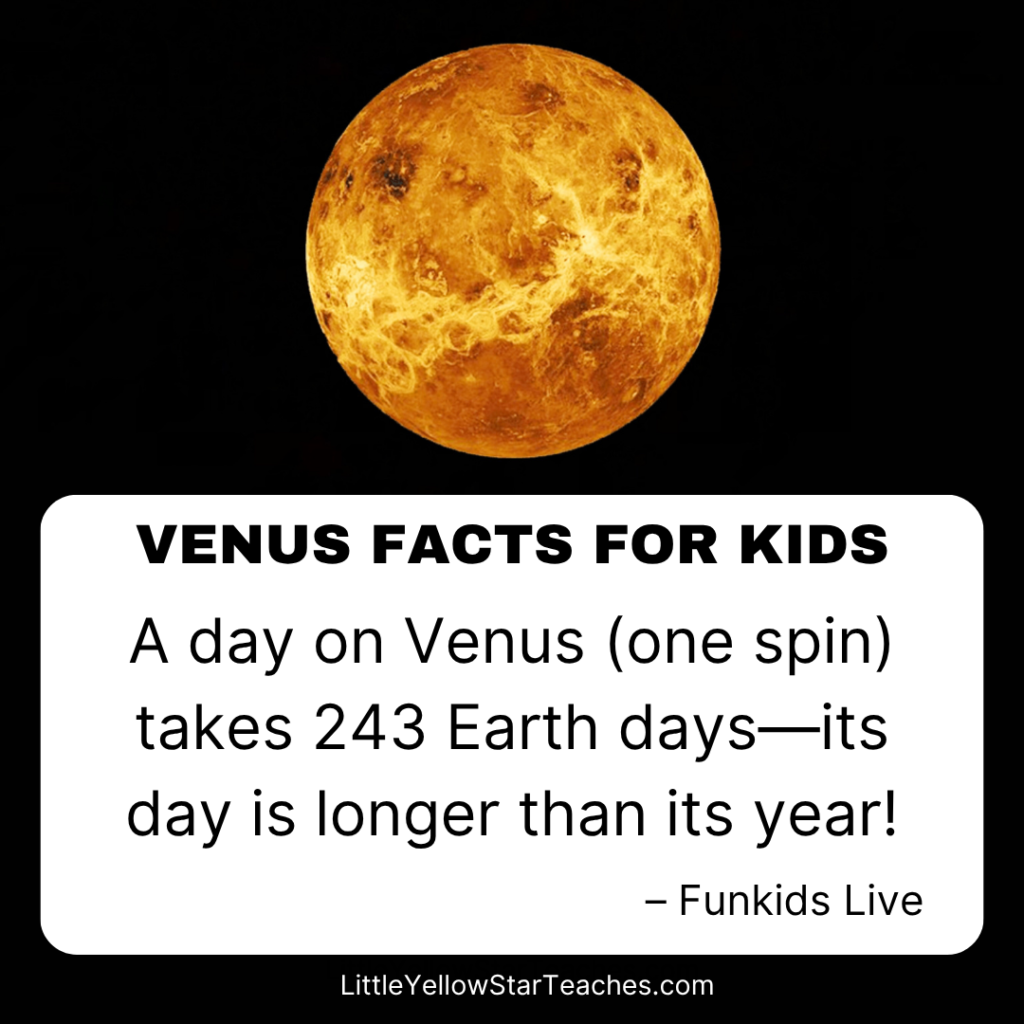
#7 A day on Venus (one spin) takes 243 Earth days—its day is longer than its year!
A single day on Venus, which is one full rotation, takes about 243 Earth days—longer than it takes for Venus to go all the way around the Sun!
Source: Funkids Live

#8 It’s a rocky world, like Earth and Mars, not a gas giant like Jupiter.
Venus is made of rock and has a solid surface, just like Earth and Mars. It’s different from gas giants like Jupiter and Saturn, which don’t have a true surface.
Source: NASA Space Place
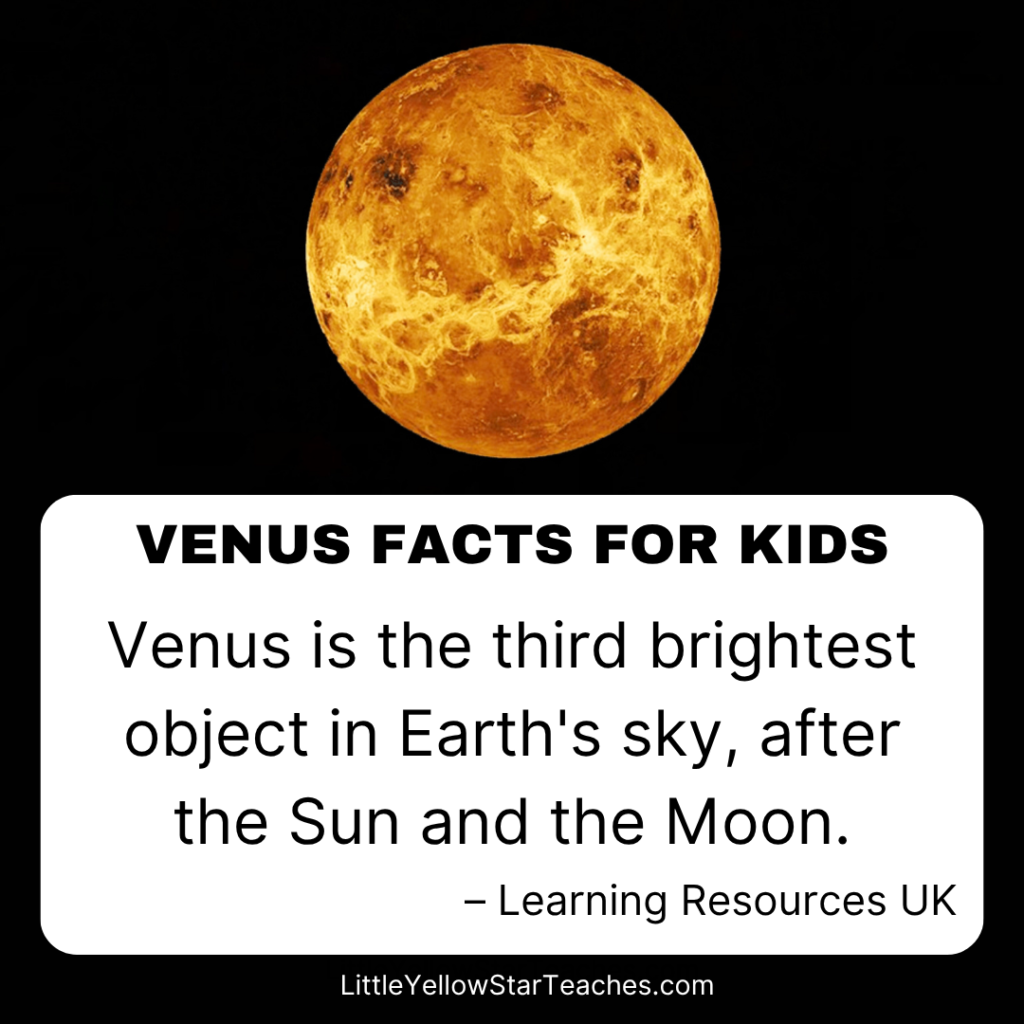
#9 Venus is the third brightest object in Earth’s sky, after the Sun and the Moon.
If you look up at the sky, Venus is often the brightest object you can see after the Sun and the Moon, which is why it’s sometimes called the “morning star” or “evening star.”
Source: Learning Resources UK
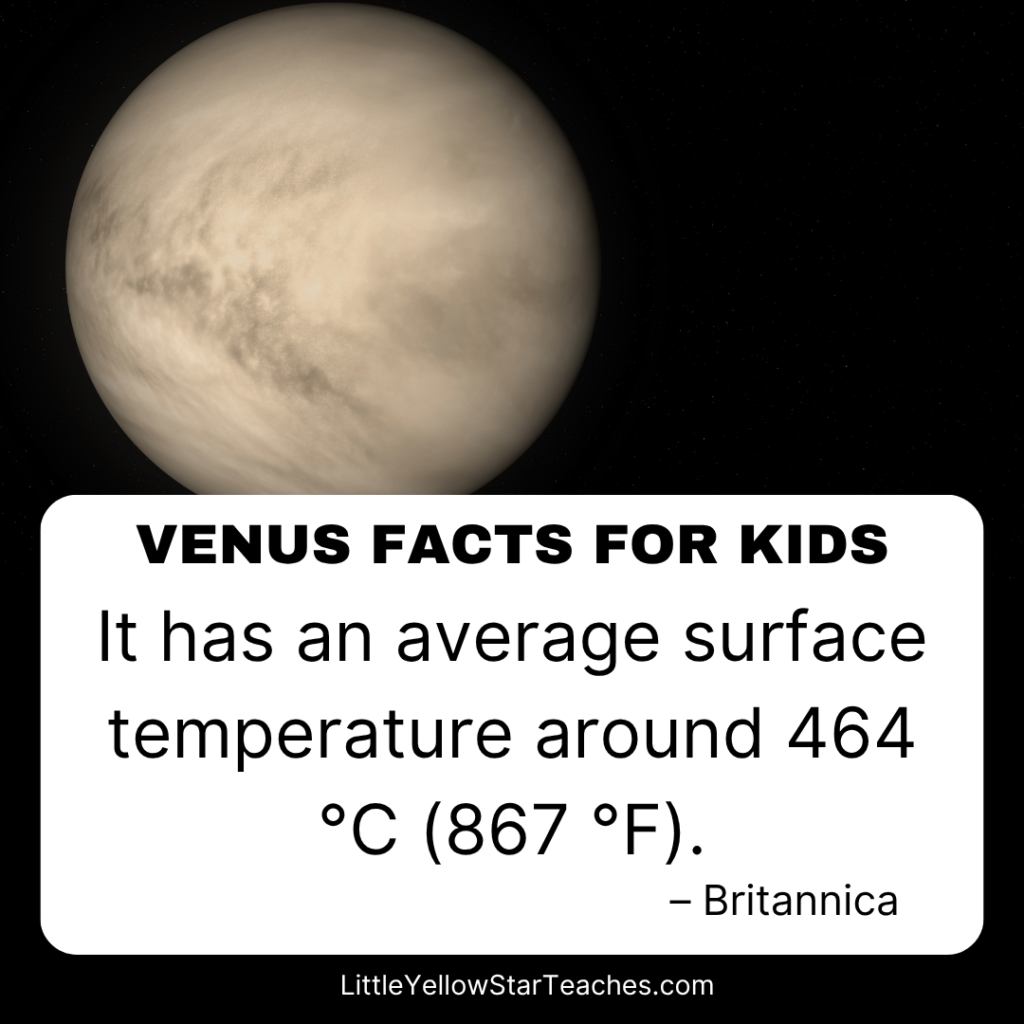
#10 It has an average surface temperature around 464 °C (867 °F).
The average surface temperature on Venus is about 464 °C (867 °F), making it the hottest place in the Solar System besides the Sun itself!
Source: Britannica
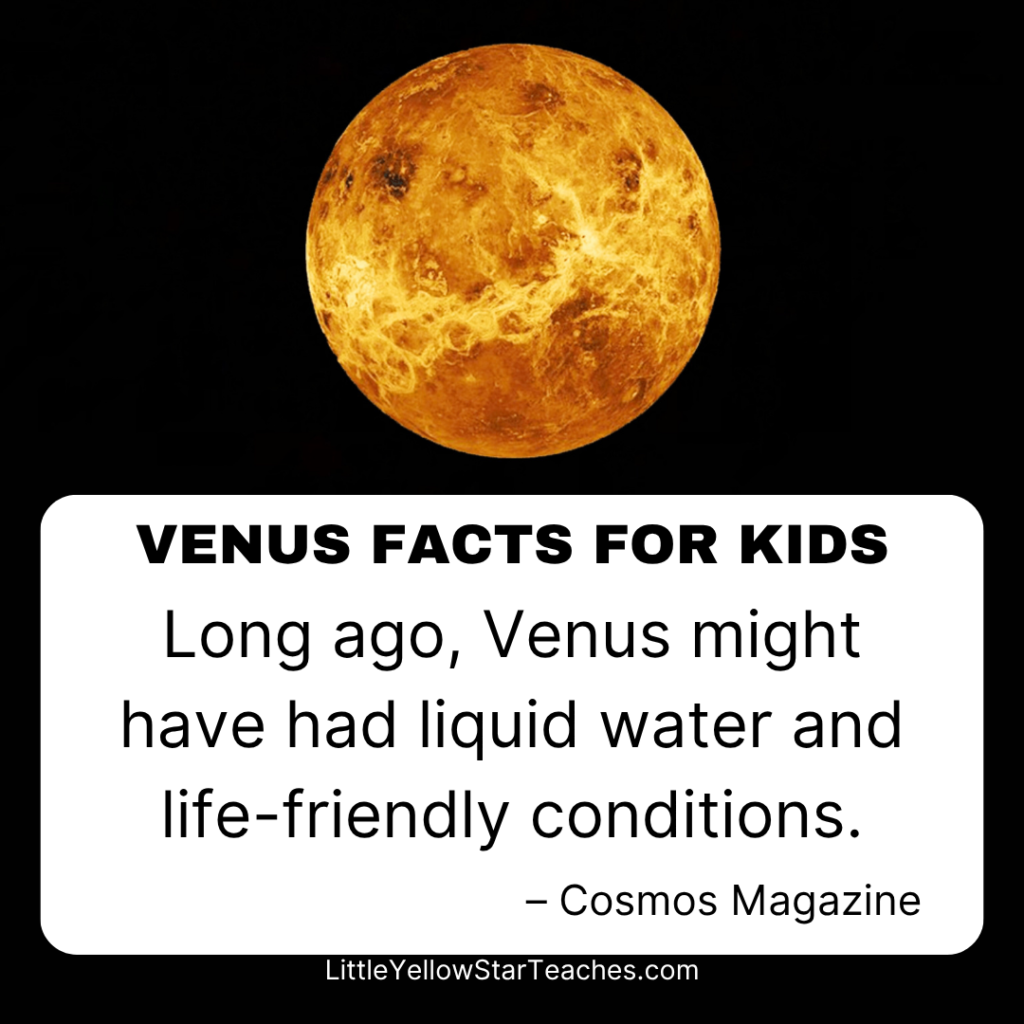
#11 Long ago, Venus might have had liquid water and life-friendly conditions.
Scientists think Venus may once have had oceans of liquid water and a cooler climate. Billions of years ago, it could have had conditions more like Earth’s, and possibly even supported life!
Source: Cosmos Magazine
Additional Resources
Venus-Related Vocabulary Words
Learn these important Venus words to become a space expert:
- Atmosphere: The thick layer of gases around Venus
- Rotation: How Venus spins very slowly on its axis
- Orbit: The path Venus takes around the sun
- Volcano: Venus has many volcanoes on its surface
- Greenhouse effect: The reason Venus is so hot—heat gets trapped by its thick clouds
- Morning star: A nickname for Venus when it shines bright in the sky before sunrise
Venus Activity Ideas For Kids
Bring Venus facts for kids to life with these creative activities:
- Venus Volcano Art: Draw or paint volcanoes erupting on Venus’s rocky surface
- Cloud in a Jar Experiment: Use simple science to show how clouds form
- Venus vs. Earth Comparison: Make a chart comparing Venus and Earth’s features
- Glow-in-the-Dark Venus: Use glow paint to create a model of Venus shining in the night
- Orbit Race Game: Pretend to be planets and race around a “sun” in your backyard
- Space Storytime: Read a book about a space adventure to Venus
Venus Related Stories and Myths
Venus has inspired stories, legends, and myths for thousands of years! Here are some favorites:
- Roman Goddess Venus: Venus is named after the goddess of love and beauty
- Morning Star Myths: Many cultures tell stories about Venus as a special star in the sky
- Adventures in Space: Books and cartoons imagine astronauts exploring Venus’s clouds and volcanoes
- Venus in Ancient Times: Stories from Babylon, Greece, and Egypt talk about Venus as a bright, important object
- Legend of the Two Sisters: Some Native American tales describe Venus and the moon as sisters in the sky
- Sci-Fi Explorers: Stories and movies where space travelers visit Venus and make exciting discoveries
What’s Your Favorite Venus Fact?
Venus is a planet full of surprises—from scorching temperatures to bright, beautiful clouds! Now that you’ve learned these Venus facts for kids, you can amaze your friends, try new activities, and keep reaching for the stars. Keep exploring—there’s a whole universe of fun facts for kids waiting for you!
What is your favorite Venus fact from the post, or do you have another? Share it by tagging me on Instagram @LittleYellowStarTeaches. I would love to see!
Bye for now,
Prima from LittleYellowStar
* * *









